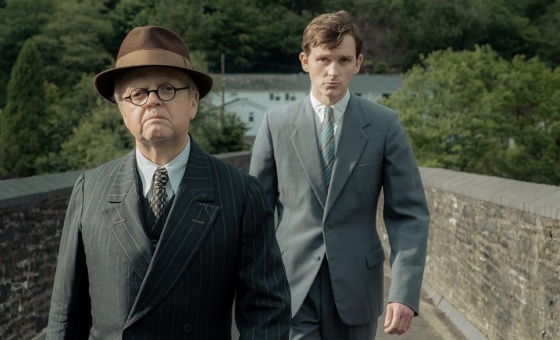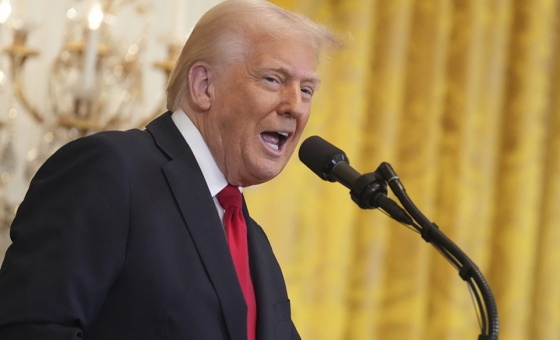This is the last article you can read this month
You can read more article this month
You can read more articles this month
Sorry your limit is up for this month
Reset on:
Please help support the Morning Star by subscribing here
IN FREEZING cold weather conditions on a Thursday night amid the post-Christmas and new year lull, you could forgive a football stadium for not being at its best, but somehow, even in the most testing times, Goodison Park always turns up.
It continues to do so despite the Everton FC of recent years playing some of its worst football since a notoriously bad spell in 1994. At times, it might even have been worse.
Against a backdrop of the financial troubles and bad management of the club at board level in recent years, the sacking of manager Sean Dyche just a few hours before kick-off, and recent ownership uncertainty (which fans will hope has come to an end following the takeover by The Friedkin Group last month) Everton played an FA Cup third-round tie against a Peterborough United team themselves struggling at the bottom of English football’s third tier.
Even in these conditions and these circumstances, 38,995 were in attendance for this game, which for all intents and purposes is a sell-out. Everton regularly see attendance numbers just over or under 39,000 at the old stadium which has a capacity of around 39,500, and those present in the home sections for this latest match were rewarded with a 2-0 Everton win.
Fans still turned up despite this unusual kick-off time for an FA Cup third-round tie. This stage of the Cup is usually reserved for a weekend, allowing for easier travel and marking the occasion in a more appropriate fashion, but the games have been spread out from Thursday to Monday to accommodate international TV coverage.
It especially inconvenienced those travelling up from Peterborough on a workday and school night, but they still did so in their numbers and in full voice. As is always the case, these away fans become a part of the Goodison experience.
Even though the arrangement was far from ideal, night games such as this can give the stadium and the surrounding area a different feel to a Saturday 3pm or other daylight kick-off time.
Goodison is in its final season before Everton move into their new 52,888-capacity stadium at Bramley-Moore Dock next season, so these are opportune moments to see a historic English football landmark in different lights.
There is a point on nearby Stanley Road where the lights from the upper floors of the Goodison Road Stand can be seen to the east and the new stadium can be seen jutting out of the docks to the south-west. The past and the future in the same setting for a limited time only.
Lower-profile games such as this one can give a stadium more room to stand out. The event is less about the match itself and more about the custom and tradition of going to the game.
The things you might normally take for granted or ignore can seem more prominent, especially with the knowledge they won’t be there for much longer.
These games are about the habit of going to this place and watching football every other week, or every other day as it can sometimes feel with today’s fixture calendar, regardless of how well your team are doing and who they are playing.
Football grounds are very much second homes for many and Goodison Park has become one for those who’ve regularly watched, reported on, coached or played for this team throughout the decades.
Its tightly packed press box, designed for journalists using pen and paper rather than clunky laptops, has a charm of its own. Despite its cramped position, it somehow still seems to accommodate more outlets than some of the newer, bigger media facilities.
This is reflected in the fact that, unlike some other grounds, Goodison has been a good home to the Morning Star.
Seeing as our paper could be considered one of the less mainstream media outlets, some clubs will overlook it when high-profile games come around, declining press box access and favouring more widely read national titles, or international media who turn up for one game per season, but Goodison has always found a space for us regardless of the game.
This being modern-day Everton, even this latest game against lower-league opposition in the cup was not without its own drama and storylines, and any interested media were working overtime on Thursday.
Dyche was sacked around three hours before kick-off, and caretaker manager Leighton Baines had to make his way over from Everton’s training ground at Finch Farm in Halewood where he was working in his day-to-day role as a development coach with the club’s youth set-up.
It might have been more fitting for Goodison Park to bow out on a high, with Everton out of crisis mode and safely competing in the top half of the table rather than at the bottom, but there is still optimism that might better befit a fresh start elsewhere.
“A manager losing his job isn’t good and it normally follows a difficult period, but I think within all of that there’s definitely now got to be hope and optimism,” Baines said after the game.
“Things are changing at the football club; the ownership, the stadium and the other things that are being talked about.
“The manager has had to leave, and that’s not what anyone wants, but there will be a new manager coming in, and that brings opportunity.”
Part of that opportunity gives Everton fans the chance to make a new home in an impressive new stadium, but the optimism is accompanied by a sadness that English football is losing a link to its past and tradition; a stadium that is almost a live museum piece until the end of this season and has been a second home to generations of reporters, staff, players and fans.
Regardless of the state of Everton FC as they move into a new gaff with a new gaffer, the old home will be greatly missed by all who visited.










